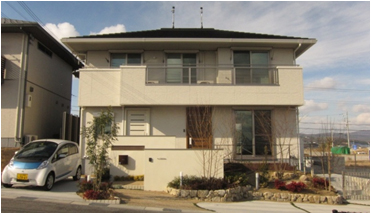November 30, 2012
First Year-Long Test of 'Smart Energy House' Shows 88% Less Electricity Use, Huge Drop in Bills
Keywords: Energy Conservation Non-manufacturing industry Renewable Energy

Copyright Osaka Gas Co.
Leading Japanese energy supplier Osaka Gas Co. and Sekisui House Ltd., a major home builder in Japan, teamed up in 2011 to run tests in a real-life setting on their Smart Energy House, which uses fuel cells, solar cells, and batteries to provide electricity. They ran a year-long experiment with people living in the house, which showed a year later in July 2012 that optimal control of the systems resulted in an 88-percent savings in electricity use, a 103-percent reduction in carbon dioxide (CO2) emissions (counting of the amount of excess electricity generated by the solar cells and sold to the grid), and a 310,000-yen savings (about U.S.$4,000) on the energy bill.
The Smart Energy House has two systems to generate electricity, one using solar cells and the other using natural gas fuel cells, along with a waste-heat cogeneration system. By integrating batteries and with the help of information technologies, the house can "smartly" generate, store, and use electricity and heat. It was the first attempt of its kind in Japan to verify effectiveness of energy savings in a smart energy home with people actually living in it for one year or more.
The companies plan further testing to optimize the combination of triple-power supply systems, along with development of a unique home energy management system (HEMS). Once technological improvements reach a practical level, planned for 2015, they aim to have it on the market as soon as possible after that.
Related JFS article:
Home Builder to Offer World's First House with Three Power Supply Systems


